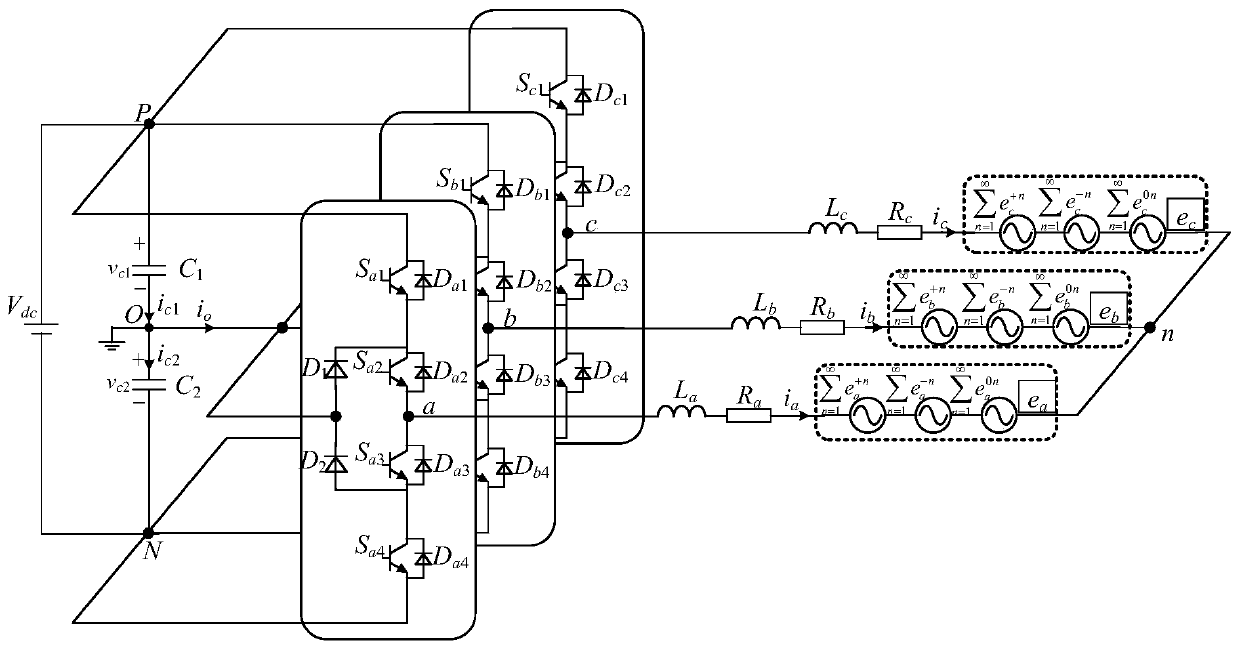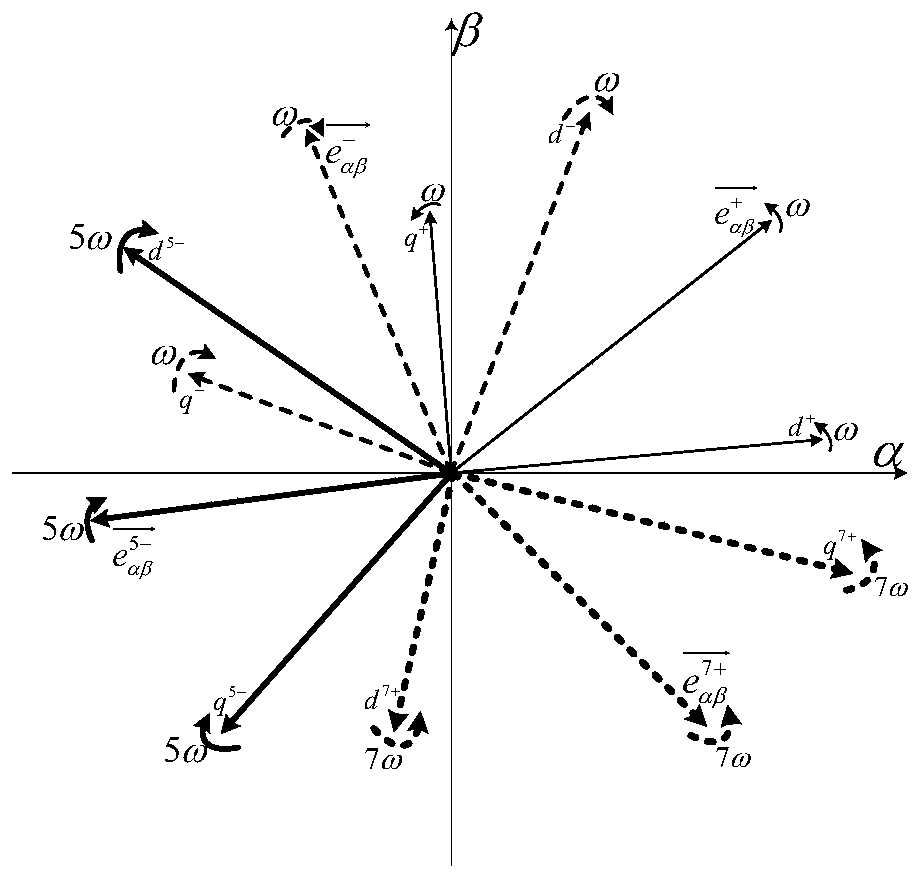Model predictive control method and device for npc three-phase three-level grid-connected inverter
A technology of model predictive control and model prediction, which is applied in the direction of output power conversion devices, electrical components, and conversion of AC power input to DC power output, etc., which can solve the problem that the three-phase network current THD value is large and the DC side cannot be well suppressed. Point voltage fluctuations, damage to switching devices, etc.
- Summary
- Abstract
- Description
- Claims
- Application Information
AI Technical Summary
Problems solved by technology
Method used
Image
Examples
Embodiment 1
[0157] The grid-connected control goal of Embodiment 1 is to eliminate the 2, 4, and 8 fluctuations in active power, according to Figure 8 The NPC three-phase three-level inverter grid-connected system based on model predictive control under non-ideal grid conditions has been simulated. The specific parameters are shown in Table 1. The simulation result of embodiment 1 is as Figure 9 as shown, Figure 9 (a)~(d) are the simulation results of the three-phase grid incoming current, the midpoint voltage of the DC side, the grid instantaneous active power, and the grid instantaneous reactive power, respectively, from Figure 9 It can be seen that the model predictive control under non-ideal grid conditions can effectively eliminate the 2nd, 4th, and 8th fluctuations of the grid-connected active power, and at the same time suppress the midpoint voltage of the DC side.
[0158] Table 1 Simulation parameters
[0159] Fundamental frequency positive sequence component amp...
Embodiment 2
[0161] The goal of grid-connected control in Example 2 is to eliminate 2, 4, and 8 fluctuations in reactive power, and the specific parameters are modified from Table 1. P * 0 =500W, Q * 0 =10kVar, the other parameters remain unchanged. The simulation result of embodiment 2 is as Figure 10 as shown, Figure 10 (a)~(d) are the simulation results of the three-phase grid incoming current, the midpoint voltage of the DC side, the grid instantaneous active power, and the grid instantaneous reactive power, respectively, from Figure 10 It can be seen from the figure that the model predictive control under non-ideal power grid conditions can effectively eliminate the 2nd, 4th, and 8th fluctuations of the grid-connected reactive power, and at the same time suppress the midpoint voltage of the DC side. In this embodiment, a large amount of reactive power buffering is required, so The fluctuation of the voltage amplitude of the capacitor voltage on the DC side becomes larger, resu...
Embodiment 3
[0163] The grid-connected control goal of Embodiment 3 is to realize the sinusoidal and balanced three-phase grid-connected current, and the specific parameters are shown in Table 1. The simulation result of embodiment 3 is as Figure 11 as shown, Figure 11 (a)~(d) are the simulation results of the three-phase grid incoming current, the midpoint voltage of the DC side, the grid instantaneous active power, and the grid instantaneous reactive power, respectively, from Figure 11 It can be seen that the model predictive control under non-ideal grid conditions can effectively realize the sinusoidal and balanced three-phase grid current, while suppressing the midpoint voltage of the DC side.
[0164] In summary, the model predictive control method adopted in the present invention achieves ideal control effects for grid-connected control of NPC three-phase three-level inverters under non-ideal grid conditions.
PUM
 Login to View More
Login to View More Abstract
Description
Claims
Application Information
 Login to View More
Login to View More - R&D
- Intellectual Property
- Life Sciences
- Materials
- Tech Scout
- Unparalleled Data Quality
- Higher Quality Content
- 60% Fewer Hallucinations
Browse by: Latest US Patents, China's latest patents, Technical Efficacy Thesaurus, Application Domain, Technology Topic, Popular Technical Reports.
© 2025 PatSnap. All rights reserved.Legal|Privacy policy|Modern Slavery Act Transparency Statement|Sitemap|About US| Contact US: help@patsnap.com



